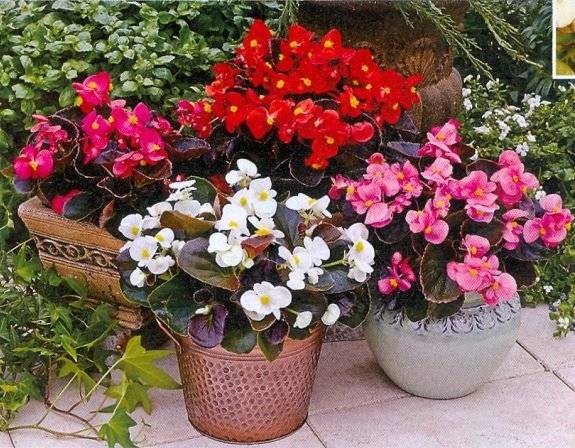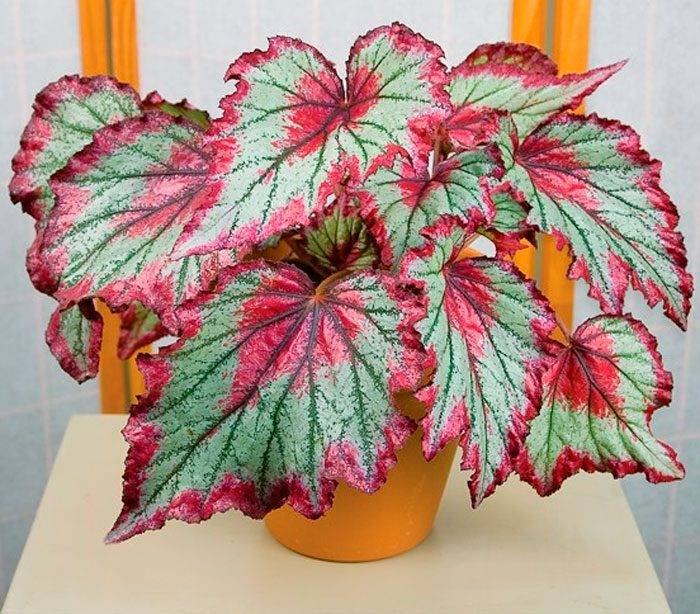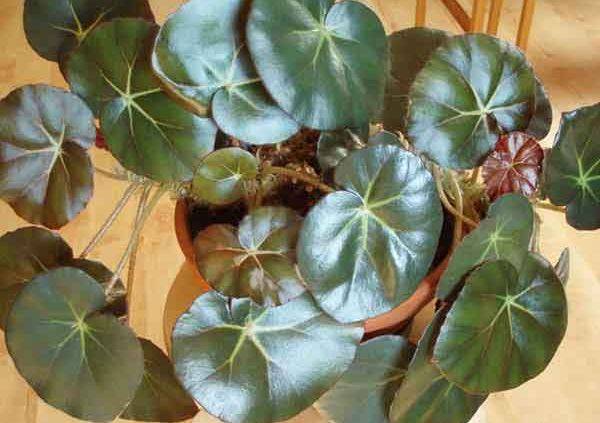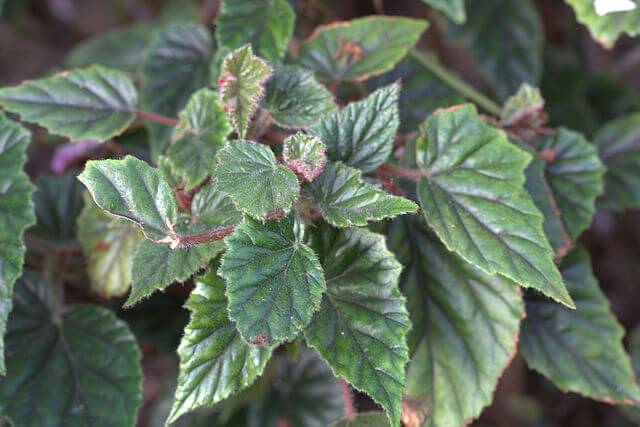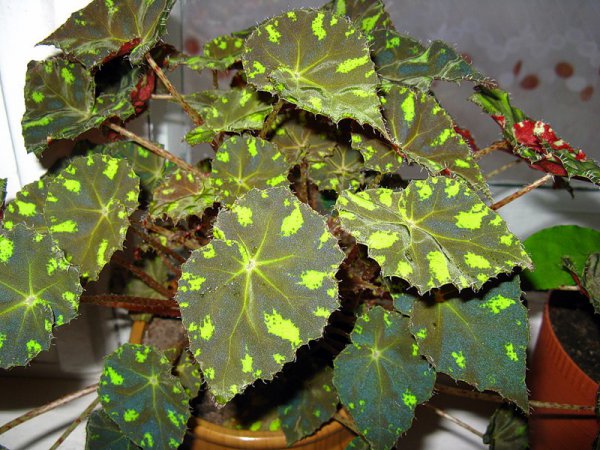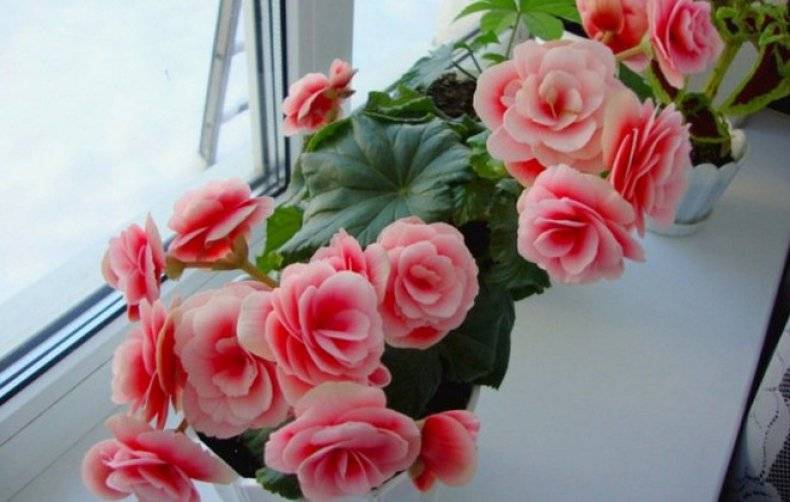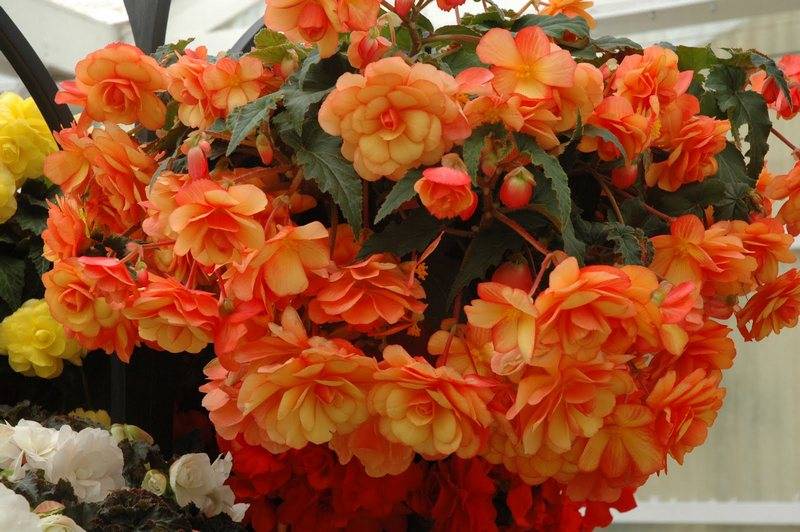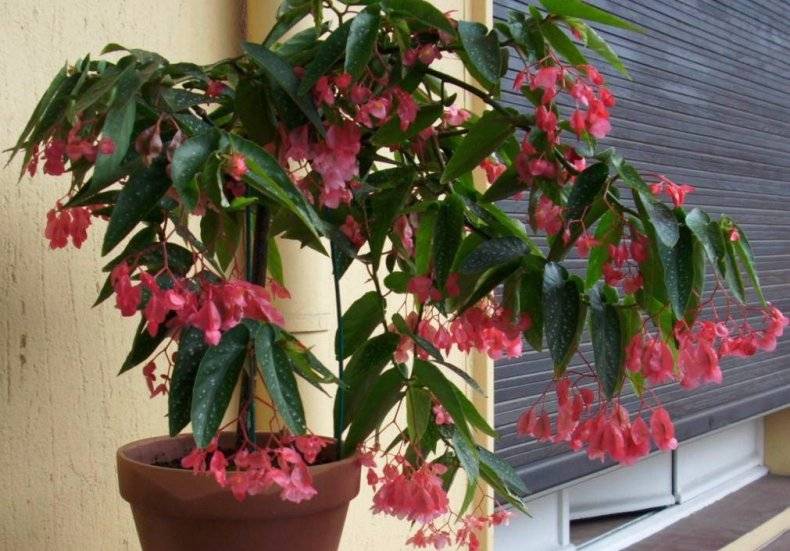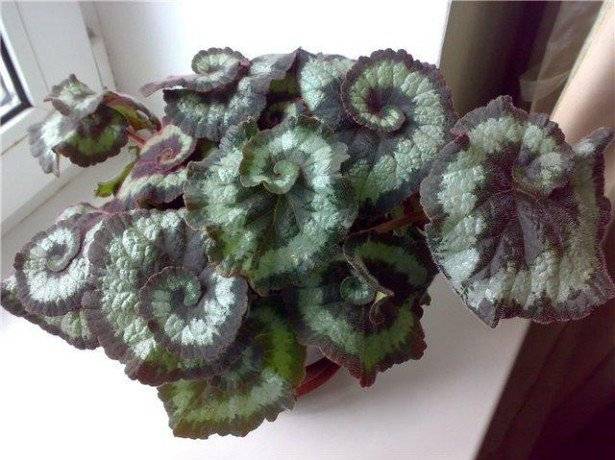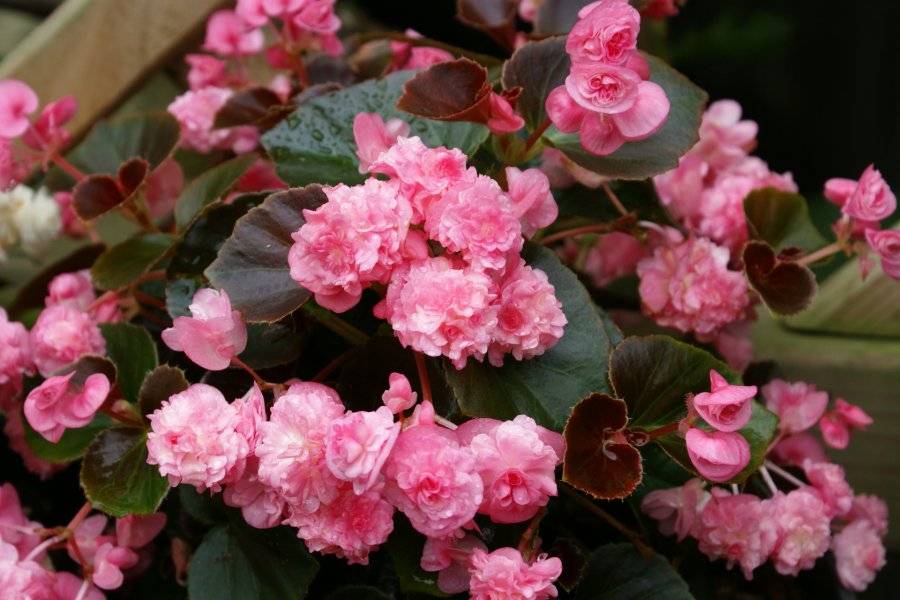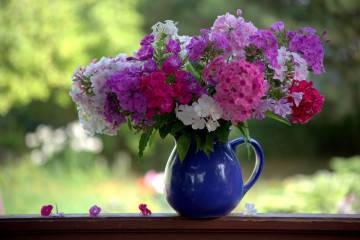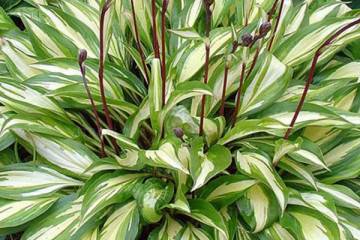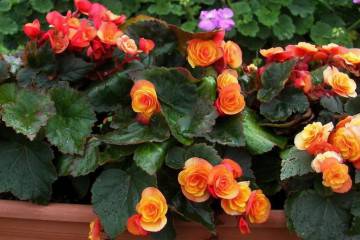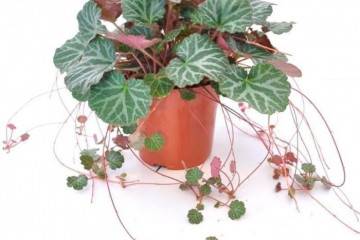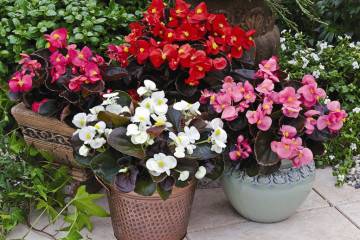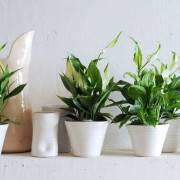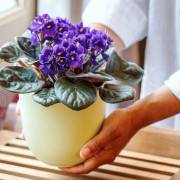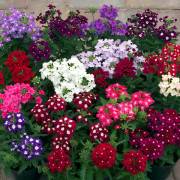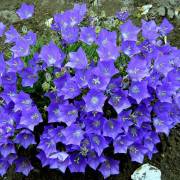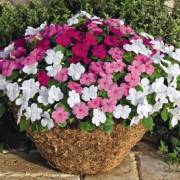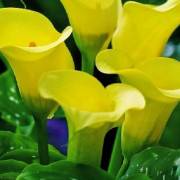Begonia flower - types and popular varieties
Content:
The most common houseplant today is begonia, which, back in the 17th century. discovered and described by a monk named C. Plumier. These flowers come in a wide variety of colors, shapes and sizes. Below in more detail about the culture.
What a begonia flower looks like: plant characteristics
Begonia is a genus of plants with over 1600 different species. Depending on the species, it can grow in the form of grass, shrub or dwarf shrub
Description
The root system is divided into three types: branched, fibrous and tuberous.
Leaves are asymmetrical, they are whole and dissected, with jagged and wavy edges.
In plants of the genus Begonia, the upper part of the leaf can be monotonous green or other colors with various blotches, strokes, patterns. The lower part has shades of red, brown and dark purple. The stems and leaves of many species are covered with fine villi.
Inflorescences range from small to large. They have a wide variety of colors: white, pink, yellow, orange, red, with edging around the edges of the petals. After pollination, fruits are formed in the form of a triangular box with seeds inside.
Usually blooms in the summer-autumn period, but in indoor conditions flowering continues until December.
Flower care
Caring for begonias at home is easy and simple. Good lighting and the absence of direct sunlight are important for this plant. The most comfortable temperature for a flower is 18 ° C.
Landing
It is better to plant in spring, at the end of March. Planting in open ground is carried out at the end of March, so as not to freeze the plant. For this species, it is recommended to choose larger pots. One third of them need to be filled with a drainage layer of expanded clay, coal or shells.
The soil
It is best to use slightly acidic soil (pH = 5.5-6.5), consisting of peat, leaf and sod land, and coarse river sand.
Watering
Begonia is a tropical plant, so it is necessary to provide sufficient indoor air humidity (60-70%) to prevent the leaves from drying out. It is recommended to water when the top layer of the earth dries out to a depth of 1-2 cm. In summer, the plant needs more frequent and abundant watering. Before this, the water is defended for a day.
Reproduction
Reproduction is done in four ways.
- Seeds. You need to germinate seeds at the end of January, spreading them on the surface of the earth, without sprinkling them. The seed pot is placed in a warm, well-lit room, you can put it under a lamp and cover with foil. After the appearance of four sheets, a pick is made. Two months after sowing the seeds, the seedlings are transplanted into individual pots.
- Cuttings. This method is recommended to propagate at the beginning of summer. Twigs with 3-4 leaves are cut from the bush and placed in a container with water until the roots appear. This will happen in about a month. You can also immediately plant the cuttings in the ground and moisten the soil when it dries up by 1 cm.
- By dividing the tuber. This method is propagated in the spring. The plant is pulled out of the ground and the tuber is divided into several parts. Each section must have roots.The tubers are planted in separate pots.
- Sheet. Both whole leaves and parts of them are suitable for reproduction. The main veins are cut on them and placed in the calcined soil. Water the sheets through the pallet.
Ever-flowering begonia and its types
Eternal flowering reaches a height of about half a meter. The color and size of the leaves differ depending on the cultivar. The inflorescences of this species are usually small, found with two-colored petals.
The Begonia Semperflorens group includes a large number of varieties that bloom regardless of weather conditions throughout the summer.
The most famous varieties:
- Coctail is a low shrub with brick-colored leaves and culture-specific flowers;
- Ambassador is a plant with green leaves, a thin border of red color, flowers can be of various shades. The red begonia of this variety is in great demand;
- Baby Wing - a species with bronze leaves and flowers of various shades;
- Bicola is a low bush, only 13 cm in size. Leaves are green. Flowers are white with a pink edge;
- Alba is a tall, spreading shrub 40 cm high. The leaf plates are green, the flowers are large, white.
Royal begonia: types, varieties
Begonia Rex is a hybrid species of an ornamental plant. The differences of this variety are rather large leaves and small flowers (up to 1 cm in diameter).
The most popular Begonia rex varieties:
- Escargot is a bush-like plant up to 30 cm in height and 45 cm in diameter. The leaves are twisted in a spiral, they are light green with a dark edge, covered with villi;
- Mini Merry Christmas is the most variegated variety, approximately 30 cm in size. Leaves with a velvety surface and large veins. Painted in the middle and along the edges in a dark brown, copper color, turning into burgundy red with light green blotches;
- Dollar Down - a bush 25-30 cm in size. The leaves of this variety are dark red, cherry, dark at the edges, have a fan shape;
- Dark Mambo is a plant with dark, almost black spiral leaves;
- Griffin is a flower 40 cm in size. The leaf plates are mostly white with green veins.
Red-leaved begonia (fista)
Fista reaches a height of 35-40 cm. The stems of this species are short and fleshy, which distinguishes it from other varieties of the flower. The leaves of this plant are glossy above, green above and burgundy below. Petals are small pink.
Metallic begonia (metallic)
In height, metallic can reach almost a meter. The leaf plates are heart-shaped, 10-15 cm long and 6 cm wide. They are painted green with a metallic sheen. Metallic blooms from spring to autumn with small flowers of white or pink tones.
Tiger
Tiger begonia, or Bauer, is a small bush reaching a height of 30 cm. The plant of this species got its name from the leaf plate. They are small with an uneven mottled red or green color. Blooms usually in winter. Small white flowers appear during flowering.
Elatior
Elatior is a small bush, reaching 25-40 cm in height. Leaflets are dense, approximately 8 cm long, in the shape of an asymmetric heart with serrated edges. There are two types of Elatior flowers: simple and double. They form inflorescences in the form of a cascade.
The most common varieties of Elatiore are:
- Balladin. Differs in the splendor of flowering. During this, up to 70 pieces appear on one bush. flowers;
- Begonia Borias. The main feature is long flowering.
Ampelnaya
The main difference between the ampelous species and other varieties is the tuberous root system. The plant reaches a height of about half a meter. The leaf plates are large, 10-15 cm long. It blooms with bright yellow, orange or red flowers, which can be simple or fringed in type.
Corallina
Coral begonia is a tall bush, reaching up to 2 m in height in a greenhouse garden, and in indoor conditions it will be a little smaller. The leaves of Coralline are 20 cm long, up to 7 cm wide. Colored unevenly, interspersed with white. During flowering, bright flowers appear in white, orange, pink or red hues.
Collar
Collar begonia is an average plant measuring 60 cm. The leaf plates of this species are large (half a meter in diameter), light green fringed at the edges. Flowering occurs in winter. Delicate small flowers form an openwork bright pink raceme.
Terry pink
Terry begonia is a small bush. The leaves of this variety are green serrated at the edges. Flowering occurs in late spring - early summer. Inflorescences resemble small roses in shape. The edges of the petals are fringed, which is why the variety got its name.
Other popular varieties
The following varieties are in great demand among florists.
- Begonia Cleopatra. A plant of this species usually reaches no more than 30 cm in height. Its leaves resemble maple leaves. They are green and burgundy. Cleopatra blooms in January. Inflorescences are white-pink.
- Begonia Mason. It is a leafy variety approximately 30 cm high. The leaves reach 20 cm in length. The flowers are medium-sized, beige.
- Fuchsia. Reaches a height of 1 m. Leaves are glossy green. The flowers are painted in bright shades of red.
- Bouton de Rose is a large-flowered variety. The delicate pink petals gather in huge double inflorescences (18 cm in diameter), reminiscent of a rose.
- Begonia Gloire de Lorrain is a winter flowering species. The plant is small with glossy leaves. The petals are pink.
- Begonia hogweed
- Large-leaved variety. The leaves reach 25 cm. In shape, they resemble a leaf plate of a hogweed, which is why the plant got its name.
- The castor-leaved begonia is an ornamental-deciduous species, reaching more than 1 m in height. During flowering, delicate pink inflorescences appear.
- Grandiflora is a species with a tuberous root system. The height of the plant depends on the variety. The size varies between 20 and 80 cm. The popularity of the variety of grandiflora: Orange (low bush 25-30 cm, dark green glossy leaf plates are collected in a rosette, flowers reach a diameter of 10-15 cm); Rose is a small plant with large, rose-like, dense pink flowers; Yellow - a bush of 20-25 cm, the Yellow variety is characterized by dense lemon-colored flowers with a diameter of 10-12 cm.
- Waste paper, or spotted begonia. It grows in the form of a bush with large spotted leaves 10-15 cm long. During flowering, the inflorescences form hanging clusters of white and pink flowers.
- Black Prince. The leaves of this variety are colored in a very dark, close to black, color. The surface of the leaf resembles velvet.
- Fimbriat. A fringed plant with a wide variety of colors: pink, red, white, orange. Yellow begonia of this variety looks especially impressive.
- Illumination. This variety is characterized by long shoots up to 0.8 m. Illumination flowers are large, up to 12 cm in diameter.
- Carnival. Large-flowered variety 30-35 cm high. Camellia-shaped flowers, densely double.
- Drega is a caudex begonia.
